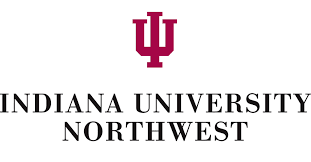Economists at the Indiana University Kelley School of Business expect the U.S. and Indiana economies to remain somewhat resilient amid challenges presented by COVID-19 and supply-chain issues, but labor shortages will continue to be a major concern for many businesses in 2022.
The U.S. economy may average only about 300,000 in added jobs each month, according to a forecast released today by the Indiana University Kelley School of Business.
In the past 12 months, it has been doing so at an average rate of about 450,000 per month.
“This will be about two-thirds the rate during the past year, but it will be enough to put year-end employment above its pre-pandemic level,” said Bill Witte, author of the Kelley School’s U.S. forecast and an associate professor emeritus of economics. “Total employment remains 4.5 million below its pre-pandemic level. This deficit is not a result of deficient demand for labor — currently there are nearly 11 million job openings in the U.S. — it reflects a severe decline in labor force participation.
“During the shutdown, the participation rate dropped 3.2 points — a very large change. During the first four months of the restart, it recovered close to half that, but in the 14 months since it has made no further progress. The labor market situation confounds the other supply-side problems. Building new capacity requires labor, both for construction and then eventually staffing.”
Indiana — which has seen about 60,000 workers drop out of the labor force — will mirror the nation, with labor growth close to 2 percent in 2022. Most job gains in the state will be in services.
“Last winter, we thought slack in the labor market would provide opportunities for growth in 2021, but Indiana, along with the rest of the country, has reported labor shortages — a reversal of expectations,” said Timothy Slaper, co-director of the Kelley School’s Indiana Business Research Center. “We hope to see the workforce recover in Indiana by the end of 2022. Many factors will affect the recovery, including stimulus, supply-chain restoration, labor participation rates, and continued demand for goods and services.”
One sector of the labor market particularly expected to hamper economic output in Indiana is trucking. The Commercial Carrier Journal reported a shortage of 80,000 truck drivers nationally.
“This leaves manufacturing-oriented states like Indiana in the middle of the supply-chain bottleneck,” Slaper said. “With aging truck drivers and early retirements fostered by COVID-19, as well as logistics interruptions for shipping, the problem is only amplified.”
Kyle Anderson, clinical assistant professor of business economics and faculty chair of Kelley’s Evening MBA Program, said the Indianapolis Metropolitan Statistical Area — which accounts for 31 percent of the state’s population and about a third of state employment and income — will continue to be the economic driver for the state.
But Anderson added that downtown Indianapolis may need to reinvent itself in some ways as fewer people return there for work.
“Tourism and convention business should pick up in 2022, bringing in welcome dollars from across the country,” Anderson said. “Residential development in the area marks a shift toward a more balanced and healthy economy. However, these gains are offset by work-from-home trends that will continue for the foreseeable future. Office real estate will remain underutilized, limiting economic growth for the city.”
Employment growth over the next three years in Indianapolis is projected at nearly 3 percent.
Witte, who has helped prepare the annual Business Outlook forecasts for more than three decades, is also concerned that higher wages sparked by the current labor shortages could produce “serious inflationary pressures.”
“The Federal Reserve says this will be temporary,” he said. “That sounds a lot like what they said in the late 1960s and the 1970s, as inflation rose from 1 percent to double digits.”
Other key points from the forecast:
Growth in output will come back in 2022 but will decelerate during the year. Growth will total about 4 percent for the year.
The world economy is expected to expand by 4.9 percent in 2022, although growth will be uneven due to the inequality in countries’ vaccine access and the differences in their ability to provide fiscal and monetary stimulus to support the recovery.
The starting point for the forecast is an econometric model of the United States, developed by IU’s Center for Econometric Model Research, which analyzes numerous statistics to develop a national forecast for the coming year. A similar econometric model of Indiana provides a corresponding forecast for the state economy based on the national forecast plus data specific to Indiana.
A detailed report on the outlook for 2022 will be published in the winter issue of the Indiana Business Review, available online in December. In addition to predictions about the nation, state and Indianapolis, it also will include forecasts for other Indiana cities and key economic sectors.
The Kelley School presented its forecast at the Crowne Plaza Downtown/Union Station hotel in Indianapolis. Kelley faculty will present their forecast in nine other cities around the state, where they will be joined by local panelists from other IU campuses and other universities, offering perspectives on the global, national, state, and local economies and financial markets. The tour is sponsored by the Kelley School of Business, the Kelley School of Business Alumni Association, the IU Alumni Association, IU campuses and numerous community organizations.






